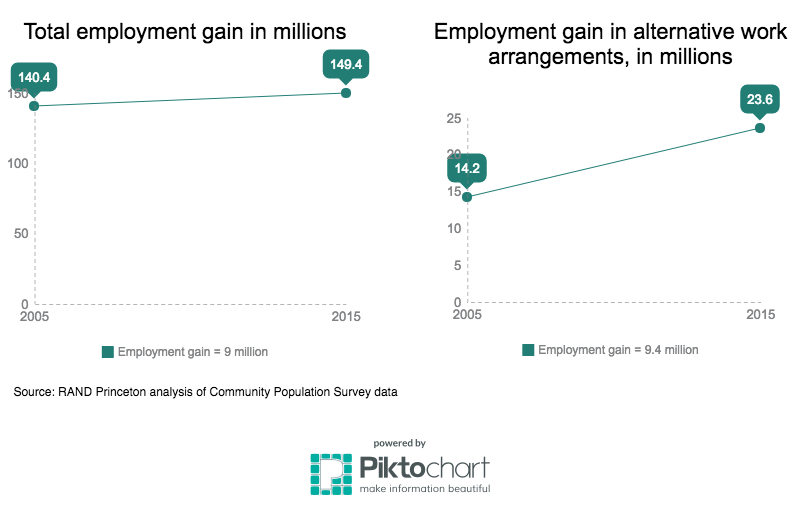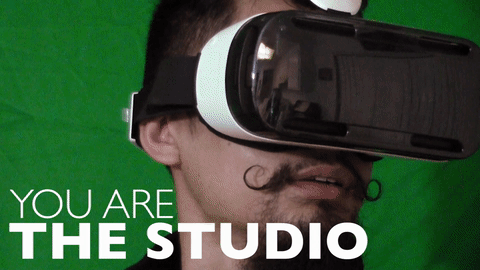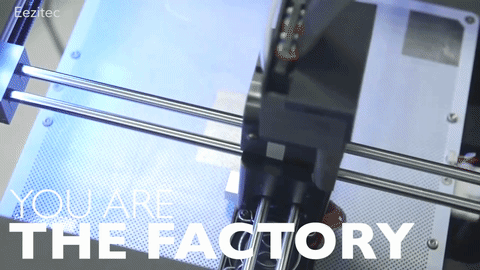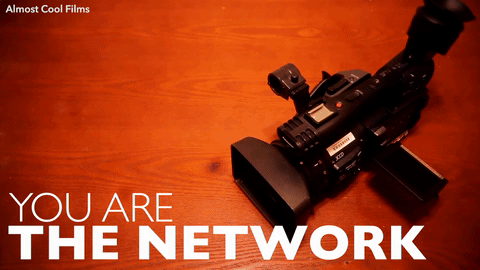Access to technology, crowdfunding and digital distribution means anyone can manifest an idea and bring it to market.
“And it’s easier to brand yourself as an individual and a company through digital media than it ever was before,” Geist said. “So those barriers to creating a business are just a lot lower.”
The democratization of technology has transformed industries — from publishing to television, manufacturing and gaming — by distributing creative and economic power so that it’s no longer concentrated in the hands of a few big businesses.
Entrepreneurship is enjoying a renaissance by many measures. There is more interest in and exposure to entrepreneurship than ever before, while venture and angel investment, as well as startup valuations have skyrocketed, according to a 2015 report, “State of Entrepreneurship,” from the Kaufmann Foundation.
Venture capital investment has reached levels not seen since the dot-com crash of 2000.
Today’s entrepreneurs have access to powerful tools, such as design software and 3D printers, without too steep a learning curve. “We can choose a problem we want to solve and go out and solve it,” said Ryan Prust, who co-founded a venture studio in Los Angeles that helps entrepreneurs get their ideas off the ground.
“I think previously the American dream was all based around having a career as an employee,” Prust said. “Picking one field and doing that for 40 years. That’s no longer the way we do it.”
“Older generations, the baby-boomer generation, their whole thing was — you go to work for the company and they take care of you forever,” Geist said. “They treat you like family. They give you your pension. They take care of all your benefits.”
She describes a new approach to work and the American dream. “It’s not so much, ‘What can my employer do for me?’ But ‘What can I do for myself and what do I want in my career?’”
That new attitude also has to do with the state of the job market, as the era of “big work” has given way to a gig economy. Job security has grown increasingly precarious.
The number of workers in alternative work arrangements as their main job rose from 10.1 percent in February 2005 to 15.8 percent in late 2015, according to the RANDPrinceton Contingent Worker Survey. That includes temporary help agency workers, on-call workers, contract workers, and independent contractors or freelancers.
The report’s findings suggest that all net gains in employment in the U.S. economy from 2005 to 2015 occurred in alternative work arrangements.

“Because contingent work can be unstable, or may afford fewer worker protections depending on a worker’s particular employment arrangement, it tends to lead to lower earnings, fewer benefits, and a greater reliance on public assistance than standard work,” states a 2015 Government Accountability Office report on the contingent workforce.
“These younger generations don’t have the same loyalty to companies, but they do have a stronger belief in sense of self, what they can accomplish,” Geist said. “Because they know that the company may not always be there. But they will.”
But some fear that self assuredness has gone too far.
“This new mentality of everyone can be an entrepreneur is very fragile because we are seeing everybody feeling that it is easy to do and you can be a billionaire, no problem,” said Kathleen Allen, professor of clinical entrepreneurship at the University of Southern California’s Marshall School of Business.
Allen says quick and easy doesn’t work so well when “you're trying to cure cancer or you're trying to come up with medical devices or you're trying to get to Mars. What we seem to be missing more is people who are willing to devote the time and energy to solve hard problems with hard technology.”
Technology by itself has no value, she says. “It’s what entrepreneurs can do with it that creates the value.”
Here’s how some workers are taking matters into their own hands with a powerful set of tools at their fingertips:


